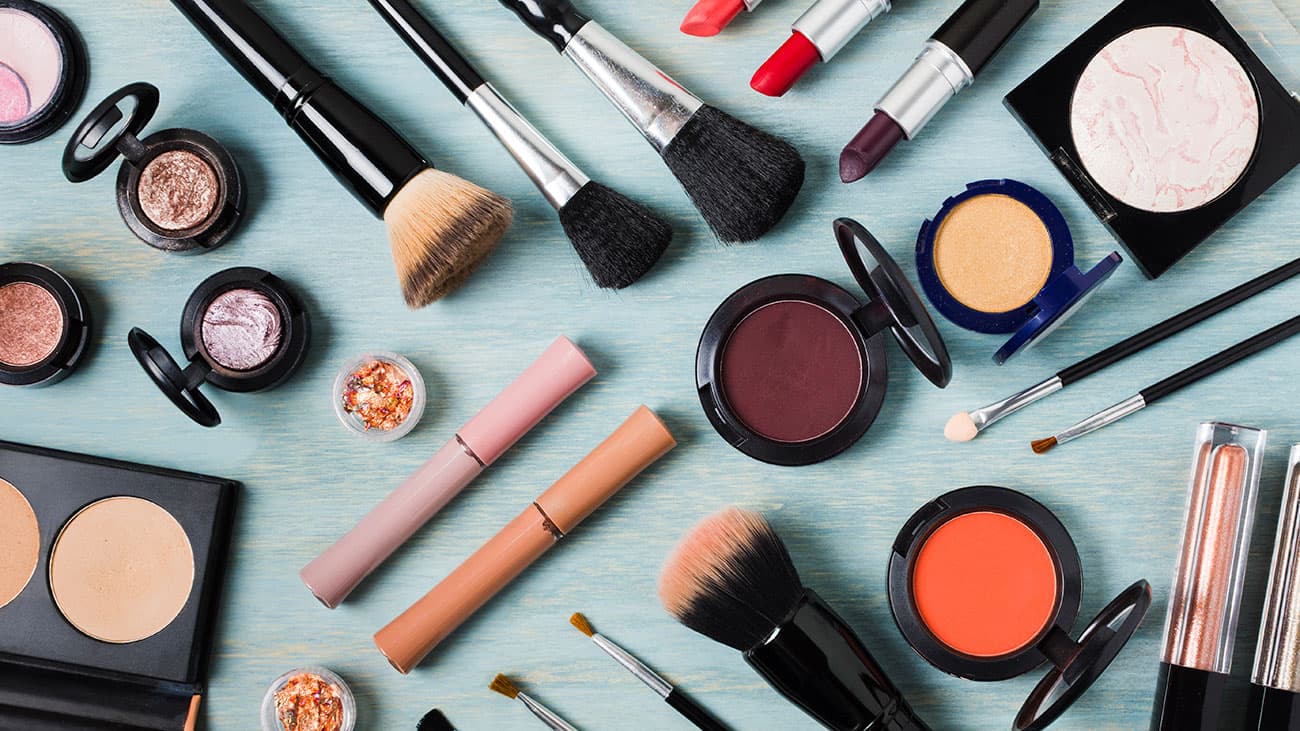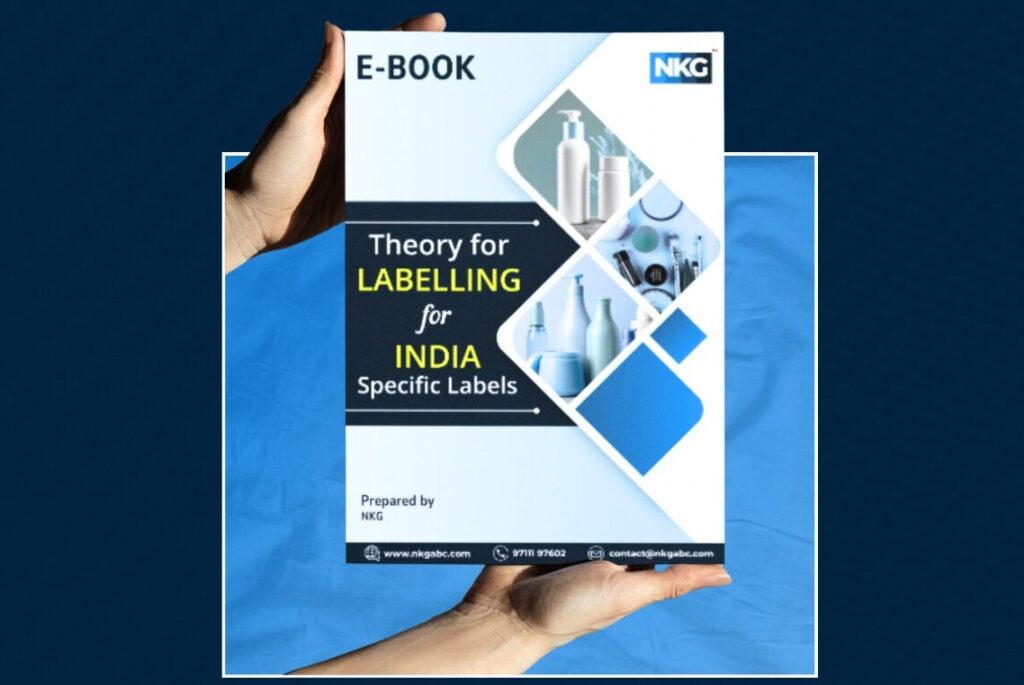1. Overview of CDSCO
In India Central Drug Standard and Control Organization (CDSCO) is the competent regulatory body that regulates medical devices and cosmetics in the Indian market. The main objective of CDSCO is to ensure the safety and efficacy of medical devices and cosmetics sold in India. CDSCO ensures that medical devices and cosmetics do not cause any harm to the intended population and have high benefits compared to the risk. To regulate cosmetics in India, CDSCO follows Drug and Cosmetic Act 1940 and Rules 1945. This means any manufacturer or importer who wants to enter the cosmetic market in India should follow the said guidelines to register their products. From manufacturing, importing, storing, labeling, transporting, and advertising cosmetics to Indian consumers, business owners need to follow the CDSCO guidelines. Thus, anyone planning to enter the cosmetic market must know these rules and acts.
2. What are cosmetics
As per the Drugs and Cosmetics Act of 1940, Cosmetics is “any article that can be rubbed, poured, sprinkled, sprayed, applied or introduced to any part of the human body to increase the beauty, appearance or attractiveness or any part that consumers can use in cosmetics.
3. What are makeup kits
A makeup kit, a cosmetic kit or makeup set, is a collection of different cosmetics and application tools. Various cosmetics like foundation, concealer, blush, eyeshadow, eyeliner, mascara, lipstick, and brushes or applicators are typically included to make applying them easier. Makeup sets come in various sizes, from compact travel to sizable professional settings. They are made to offer a wide range of products that can be used to create different makeup looks. Some kits are themed or carefully curated to achieve makeup, such as natural, smoky eye, or bridal looks. Both amateurs and professionals who use makeup frequently purchase makeup kits.
4. Types of makeup kits
Here are some common types of makeup kits:
- Starter/Beginner Kit: These kits are intended for those unfamiliar with makeup or wanting to start a primary makeup collection. Foundation, concealer, blush, an eyeshadow palette, mascara, lipstick, and simple brushes are typically included.
- Travel Kit: Travel makeup kits are designed to be small and portable for people on the go. They frequently offer more compact or multifunctional items that are simple to pack in a travel bag. Typically, these kits come with portable versions of makeup necessities like foundation, powder, mascara, and lip color.
- Professional Kit: Professional makeup kits are comprehensive and adaptable and are designed for makeup artists or people who need a wide range of products. A wide range of products, such as foundations in various colors, eyeshadow palettes, lip colors, brushes, and specialty items like prosthetics or special effects makeup, are included in this group.
- Eye Makeup Kit: The eye makeup components are the focus of these kits. Various eyeshadow colors, eyeliners, mascaras, and brow products are possible inclusions. The ability to create multiple eye looks and experiment with different colors makes eye makeup kits popular.
- Contouring Kit: To help sculpt and define facial features, contouring kits are designed. They typically consist of blush, highlighters, and contour powders or creams. These kits frequently include instructions or guides on how to get a contoured appearance.
- Special Effects Kit: These kits create makeup that looks for special effects, such as bruises, wounds, or fantasy characters. They contain liquid latex, fake blood, prosthetics, adhesives, and specialized equipment to produce different effects.
- Subscription Kit: Subscribers receive subscription makeup kits regularly (monthly, quarterly, etc.), typically including a carefully chosen assortment of products. These kits allow learning about new companies, fashions, and goods.
5. Category of make-up
Unlike medical devices CDSCO do not classify the cosmetics into different classes based on the risks involved. While cosmetics categorized as per the category list given by the authority depends upon their intended use. Below listed are the categories which are given by CDSCO for the Make-up products:
- Foundation
- Concealer
- Other face make-up products
- Mascara
- Eye shadow
- Eye pencil
- Eye liner
- Other eye make-up products
- Lip stick
- Lipstick sealer
- Other lip make-up products
- Body or face paint, including “carnival make-up”
Other make-up products
6. Forms required
Application Form | Approval Form | Fees | Licensing authority | Validity | Penalty |
Form Cos -1: Application to import cosmetic | Form Cos- 2: Permission to import cosmetics | $1000 for each category + $500 for each manufacturing site + $50 for each variant (If the products of kit or pallets are not individually registered then they will consider as a variant and fee will be applicable as $50 per kit/pallet). |
CDSCO | Five years | Under section 10 A, a person can get imprisonment for three years, a five thousand fine, or both. |
Form Cos– 5: Application to manufacture cosmetic | Form Cos– 8: Permission to manufacture cosmetics | Rs. 10,000/- (Ten items of each category are free) | Five years | A person can get imprisonment for one year, a one thousand fine, or both, which can be extended to 2 years imprisonment and a fine up to INR 2000. | |
Form Cos– 6: Loan license application to manufacture cosmetics. | Form Cos– 9: Permission for loan license to manufacture cosmetics. | Rs. 2500 and Rs. 1000 inspection fees for each inspection. | Five years | NA |
7. Documents for the cosmetics business
To manufacture | To import |
Form Cos –5; | List of documents required for Import registration in COS-2: |
Adhar card number with valid mobile number (mandatory) | Document required from the overseas manufacturer: Legal documents (which need to be attested): · First Schedule · Frees Sale certificate. · GMP certificate of an actual manufacturing site – Technical Documents (on manufacturer’s letterhead with a sign and stamp): · Product Specification/COA · Ingredients List · Testing Method · Heavy Metal declaration · Non-animal testing declaration |
Fees challan; Cover letter | Documents from Authorised Agent: · Cover Letter · Second Schedule
The applicant must provide the translated version if any documents are in a foreign language. |
Ownership of the cosmetics brand. |
After getting the registration certificate, · if there are any changes in labeling or composition or testing, specification, or documentation of any of the cosmetics pertaining to this Registration Certificate, etc., then it needs to be informed to CLA within 30 days of such changes. · And If there is any Change in Name or address of the Authorised agent or Legal manufacturer without constitutional change, then it needs to be informed to CLA within 60 days of such changes. |
Documents of the firm constitution, such as the article of association | An affidavit shall be present if there is no provision for a manufacturing license for cosmetics in a country. |
Declaration of partners and the list with the names of Directors, Partners, and Trustees with their complete addresses | For those cosmetics products imported for R & D purpose registration certificate is not required. |
Power of Attorney on behalf of the company to authorized agents to submit applications | Fresh/ New registration cases: · Any change in the constitution of a Licensee. · In case of acquisition or merger of the company with any other company. · Change in share capital or Board of Directors. · Proprietorship to a partnership, including Limited Liability Partnership or vice versa. · Conversion from a private to a public company or from a public to a private company |
Approved layout plan for manufacturing site with the section-wise layout of the site and machines. | No fresh/new registration cases: · Testing Method change. · Composition change · Updates in packs and labels · Minor manufacturing changes not affecting the final product · Change in Name or address of Authorised agent or Legal manufacturer without constitutional change.
v A fresh registration certificate has been taken from the CLA within 180 days of such change. |
Possession of documents such as ownership. Registry, lease, rent papers. |
|
Master file of the site. |
|
List of the plant according to a section of machinery and safety equipment |
|
Technical staff’s full particulars. |
|
Declaration of manufacturing analytical chemist |
|
List of cosmetic products with their composition formula and manner of labeling. |
|
Manufacturing process details, flow chart of the process. |
|
Details of the water system with water testing report. |
|
Registration from the district industries center. |
|
Permission from state pollution control for manufacturing site |
|
NOC from the fire safety office |
|
Approval from the government for testing. |
|
8. Steps to register cosmetics in India
Step 1 : Determine if the products fall under cosmetic category from the list available in Drug and Cosmetic Act 1940 and Rules 1945
Step 2 : Fill the application based on the role – manufacturer or importer.
Step 3 : Licensing authority will scrutinize the documents
Step 4 : Submit the documents based on the role -manufacturer or importer.
Step 5 : If you are an importer don’t forget to appoint the authorized agent
Step 6 : Licensing authority satisfied with the documents.
Step 7 : Grant of permission for manufacturing or import based on the application submitted.
Step 8 : Market the cosmetic product in India.
Conclusion: India’s beauty and personal care market is estimated to be US 25.96 Bn in 2023 and will reach 35.21 Bn in 2028 and show a CAGR of 6.28%. The makeup market in India is changing drastically; with increased demand, many new players are coming, and thus the government of India needs to tighten the regulations to safeguard the consumers. That’s why the government of India appointed CDSCO to ensure that whosoever enters the Indian market gets registered and has a license. CDSCO also controls the advertisement of beauty products, ensuring that it does not give any false hopes to consumers and does not promote unethical beauty standards. Thus, if you are a cosmetic manufacturer or importer, you should follow the CDSCO guidelines to obtain registration.
Download Mastering CDSCO Compliance: Your Essential Importer's Checklist
Take control of your import operations with our comprehensive CDSCO compliance checklist. Download now to ensure regulatory adherence and optimize your import workflow.







